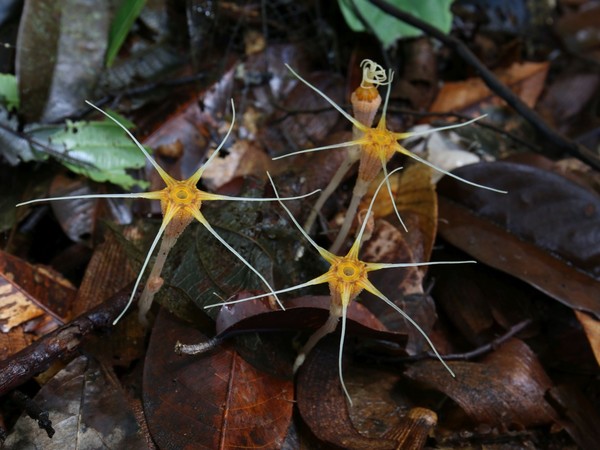Another two new species of Thismiaceae have been discovered on Borneo by a team of scientists from the Palacký University Faculty of Science and the Crop Research Institute. Thismia ornata is named after the inside of its flower, which is covered with a bright orange net resembling ornate lace. Thismia coronata, on the other hand, was named after the top of the flower, which resembles a crown.
The description of the new species was published in the international scientific journal Willdenowia. The team of Czech scientists already has twelve new Thismiaceae species to their credit.
Both new species of Thismiaceae were actually found by biologists in Borneo by accident. In the local forests, they were searching for completely different species, which had already been described, but which had not been seen since their discovery. “In the case of Thismia ornata, we set out to find the species described by the Italian botanist Odoardo Beccari in the mid-19th century. Instead, we found a plant whose flower reaches up to 12 cm in diameter and boasts a strong coloration. Especially unique is the inner part of the flower, which is covered with a deep orange net resembling lace – a form not occurring in any other known species of Thismia. This gave us a name for the plant,” described Martin Dančák from the Department of Ecology and Environmental Sciences.
Thismia ornata is also interesting in that this species is not completely unknown, as it occurs in several localities near the city of Kuching, the capital of the Malaysian state of Sarawak. Therefore, it has not escaped the attention of many amateur photographers, who have published their photos of it on the Internet. “However, no one realised it was a hitherto unknown species. This Thismiaceae also has not so many demands on its environment, and grows even where other species would not occur. For example, we found it on the edge of the forest in the local mini zoo, right next to the crocodile enclosure,” added Michal Sochor from the Crop Research Institute.
The second Thismiaceae, Thismia coronata, was discovered by scientists while searching for the species Thismia goodii. Thanks to its bright blue flowers, this plant is one of the iconic species of Thismiaceae. “Interestingly, the two species are actually very similar. Although Thismia coronata has yellow-orange flowers, both species have the top of the flower in the shape of a mitre, which in technical terms is literally used for the upper part of the flower of some Thismiaceae precisely because of its resemblance to a bishop’s mitre. Thanks to its yellow-orange colour and the special skirting around the flower, it also resembles a royal crown, which led us to name it coronata,” described Michal Hroneš from the Department of Botany.
This species of Thismiaceae grows in the mountains of northern Borneo, on the border between the Malaysian states of Sarawak and Sabah, and has so far been found in only one place. Like most other Thismiaceae, it grows in deep shady tropical rainforests. “Another piece of good news is that in January this year we finally did find the blue-flowered Thismia goodii,” added Dančák.
These two species are now the eleventh and twelfth new species of Thismiaceae that Olomouc scientists have found in Borneo. Experts from the Faculty of Science have been going on expeditions to the rainforest in Borneo for several years. Their first discovered Thismiaceae was Thismia hexagona, followed by Thismia brunneomitra, and the third rare species was a Thismia which was given the attribute inconspicua - inconspicuous.
